Animal love is well earned
There is an entire pet-industry. Not just for breeding, catching
or sheltering them, but also for supplies such as food, cages
and toys. |
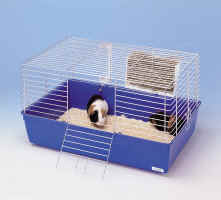 |
| A guinea pig in its cage. Its "territory" is approx. 0.15
m² (30 x 50 cm). In the wild this would be at least 200 m²,
over 1250 times as large. |
| Animals are bred to meet people's requirements. Companies
use marketing strategies to get more and more people to buy cute
pets. Just as in regular factory farming, increases in scale and
irresponsible breeding take place, with all their nasty consequences. |
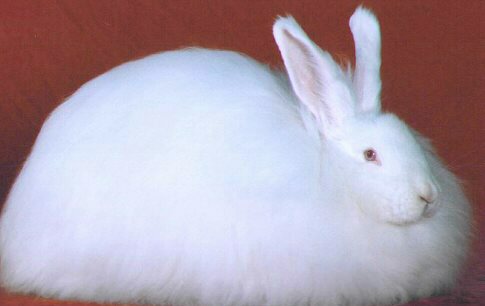 |
| An angora rabbit. Only
one of the many "models" rabbits come in today. People
determine what they like and modify animals accordingly by irresponsible
breeding. The animal's interests are of little importance. |
| Some species, especially the exotic ones, are kidnapped
from their natural habitats. Just for Holland this comes down to
about 22 million animals each year. On average, one to three percent
of these exotic animals die during transport and storage, which
is a number of 220,000 to 660,000 animals. With birds, this mortality
rate can be as high as 50 to 60%. After the animals have survived
their exhausting journey, they are put in cages for the rest of
their lives to please us.
Many animals spend their entire lives in extremely
small spaces, such as birds, rabbits, guinea pigs and fish. This
is not a natural situation for them, and they are hard put to exhibit
their natural instincts. |
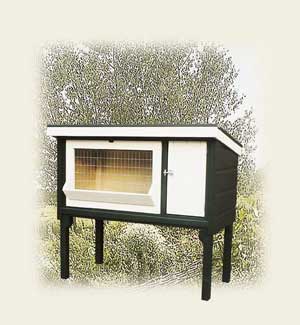 |
| Living space for a rabbit
in this "spacious" cage is a little over 0.5 m² (52
x 107 cm). That's approximately 9 A4 sheets of paper. Wild rabbits
usually have a habitat of about 300 m², nearly 600 times as
large! The animal spends its entire life there. There's no room
to exhibit natural behavior such as digging tunnels, contact with
other rabbits or sexual behavior. |
| When people get tired of their animals, they are either
killed (flushing fish through the toilet) or freed (turtles, rabbits)
which usually means death for the animals because they are not adapted
for life in the wild. Animals that grow up with people become dependent,
and often don't know how and where to find food for themselves.
If they are "lucky", they are taken to the
shelter. |
The animal shelter
Many animals end up in shelters when people can no longer take
care for them or if they don't want them anymore. This happens
to approx. 2% of all dogs and cats. |
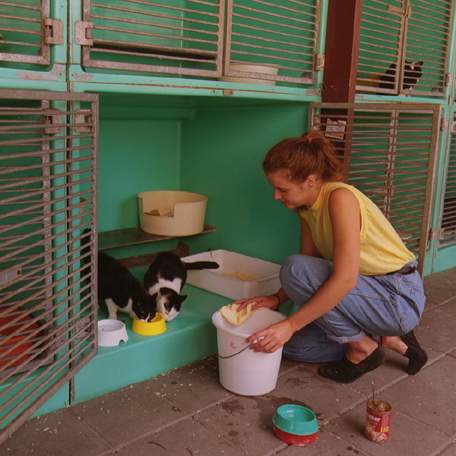 |
| Animal keeper in a cat shelter.
These animals have been dumped here because people didn't have the
time, the inclination or the possibility to care for them any longer. |
| If they are taken to a shelter, these animals are
lucky, because it also happens that people dump them somewhere,
maybe in a forest. In the shelter they will live in cages, alone
or together, but either way these cages are too small for the animals
to behave naturally. Cats are usually castrated, but this also happens
frequently with dogs. The animals have no option but to wait until
someone comes by and thinks they're cute, beautiful or sad enough
to take them home. When the shelter is full, animals are put down
to make room. |
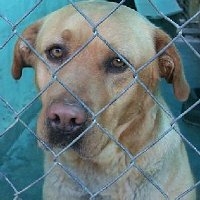 |
| Dog in shelter |
| Is a goldfishbowl a instrument of torture? |
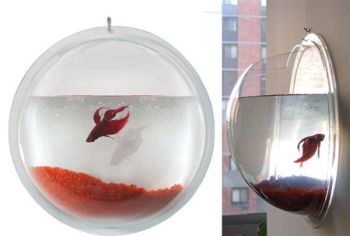 |
| A goldfish is a very small "designer"-bowl |
Can we just impose these restrictions on animals?
Conclusion: take a pet? |






